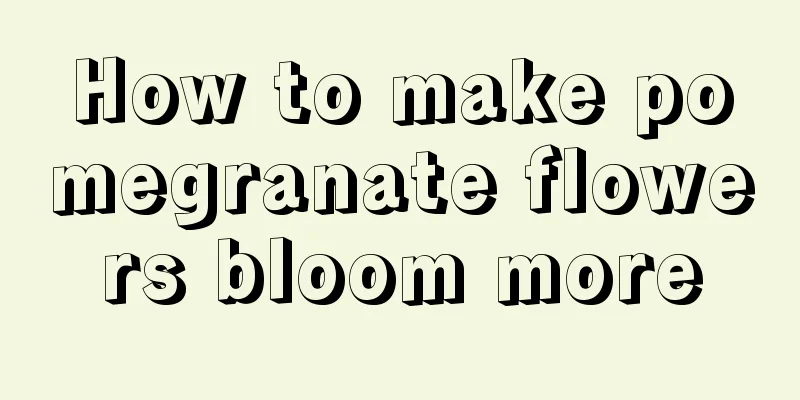How to cut off the head of Gloxinia after flowering

1. What is beheading?During the regrowth process of many plants, if not treated, they will rarely produce new buds and will often only grow to the bottom. As a result, the entire plant will be abnormally tall, and sometimes it will fall to one side because it is too tall, and there is even a risk of breaking itself. Therefore, if you want to cultivate a beautiful ornamental flower, you have to process it. This treatment is to cut off its tip and then leave it to wait for it to reroot. This is commonly known as beheading. 2. How to cut off the head of Gloxinia1. Beheading timeBefore dealing with Gloxinia, the most important thing is to wait for buds to grow below and ensure that there are no flower buds and buds on the cut part. If no buds grow, then after being cut, the plant will grow new branches very slowly, and may even die because of the long period of time. If there are flower buds and buds in the cut part, nutrients will not be supplied to the roots, which will make it difficult to grow roots and the plant will eventually die. Therefore, before beheading, you must carefully consider whether your Gloxinia should be beheaded and whether it is time to behead it. 2. MethodsWhen buds appear below the Gloxinia plant, you can cut the top of the plant. First of all, you must make sure that there are no flower buds or flower buds on the cut branches. If there are any, they must be removed, otherwise it will be difficult for them to take root later. After beheading, keep the cut part as it can take root and grow new plants. Keep the cut ones and prepare a cup of clean perlite and a container. The container does not need to be too big, just enough to hold the plant. Pour the perlite into the box and leave a hole in the middle to facilitate inserting the branches. After compacting it, water it. The water level should not allow the perlite to float. After that, you can continue to cultivate it. If the leaves wilt, water it until roots and bulbs grow. Around July, the African violet will bloom, and the new plants will be more beautiful than before. If you continue to do this treatment in the future, your Gloxinia will become more and more suitable for viewing. |
<<: How to prune bitter water rose
>>: How to water the peach beauty
Recommend
How to water vegetables on the balcony
When to water Water and fertilizer are the same. ...
How to keep water bamboo from dying in winter
1. Keep warm Water bamboo is afraid of frost. If ...
How to plant Artemisia hornbeam
How to plant Artemisia hornbeam First, let’s take...
What is the flowering period of Gloxinia flowers?
1. How long is the flowering period? Gloxinia blo...
Taboos for cultivating firecracker flowers in winter
1. The temperature cannot be too low In winter, w...
How to grow Chinese cabbage on the balcony
Material preparation Chinese cabbage seeds: Where...
What is the best way to water Impatiens?
Impatiens , also known as henna, daughter flower ...
Cultivation methods and precautions of sand apple
1. Maintenance methods 1. Substrate selection: Sa...
How to plant durian seeds
Durian seeds can be planted in spring and summer,...
You should grow one of these “money flowers” no matter how expensive they are. Don’t wait until you go bankrupt to think about it!
Money tree, I wish you good fortune and prosperit...
Can soil mint be hydroponically cultivated? How to cultivate hydroponically mint?
Can mint be grown hydroponically? Mint can be gro...
Ecological functions of tree stranglers
As bird food Despite its nickname of "strang...
Can baby's breath be cultivated hydroponically? Cultivation methods and precautions for hydroponically cultivated baby's breath
Can baby's breath be cultivated hydroponicall...
How to store Oxalis bulbs
Early knowledge on the preservation of Oxalis bul...
Eggplant's growing environment and local conditions
Eggplant Growth Environment and Conditions Eggpla...









